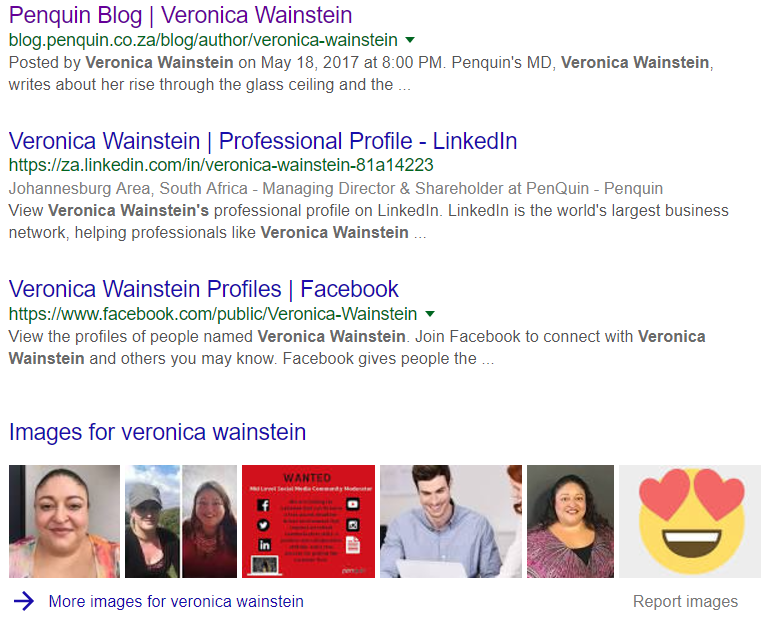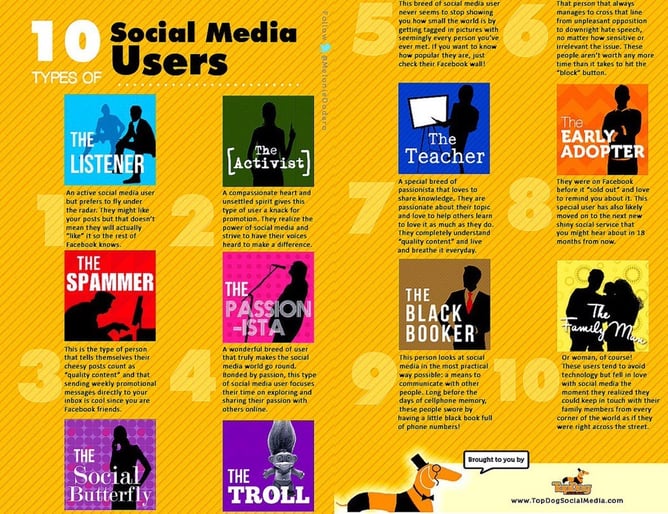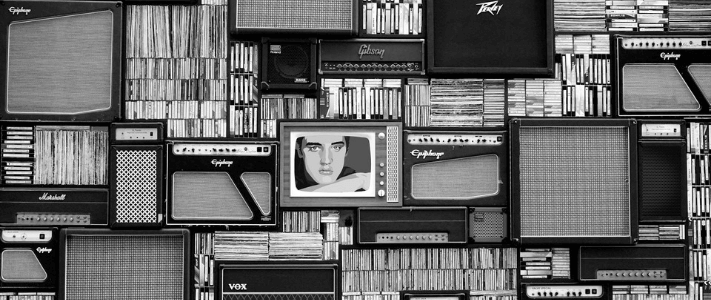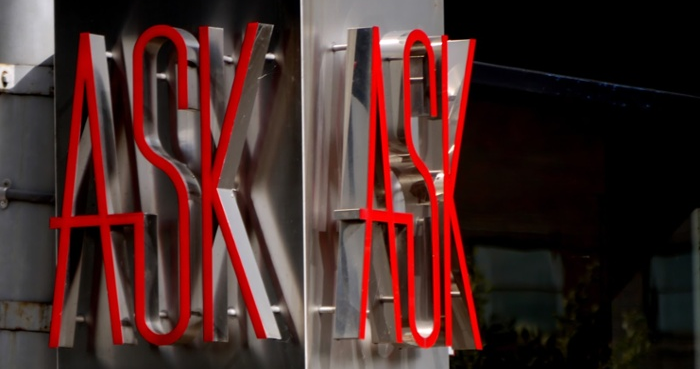 Who are you in the biggest connected network known to man? Find out how social media has changed not only our personal lives, but the way we do business.
Who are you in the biggest connected network known to man? Find out how social media has changed not only our personal lives, but the way we do business.
As I careen into the digital age, trying to keep up with its ever changing landscape, I’ve had to pause and think: 'What am I doing here? What impact has the social media environment had on my life, and what do I contribute to it?'
Having a presence on social media is no longer optional.
Ten years ago joining Facebook was cutting edge, today however, social media is a must have for both individuals and brands. The digital landscape has undoubtedly become mass media, and we’re more connected than ever before. The following video gives you a taste of the impact of social media... and this is just the tip on the iceberg.
Gone are the days where your neighbours are just the Joneses. Your neighbours are now Max from the United Kingdom, Sarah from New Orleans, Jenny from Oz and Miguel from Peru.
Technology and globalisation have compressed time and space, and we now connect instantly with people on opposite ends of the world. Information is available at the click of a button. We’re moving toward an environment where we’re totally immersed in technology - it’s an extension of us, just like our eyes, our ears and our hands. Like a scene from the 2009 film, Avatar, we can upload and download data much like the Na’vi could do in their environment.
If we don’t keep up, we’re going to find ourselves lost in a world that’s as foreign to us as science fiction.
I find myself wondering, quite regularly, whether there’s a difference between our internet selves and our physical, everyday selves - the lines have become noticeably blurred. I delved into it a little and thought about the image that we, as individuals, put out into the Worldwide Web, and what that content says about us.
I believe that although our internet selves portray our best selves and not full, well rounded selves (flaws and all), each of our social profiles still make up a part of who we are. As an experiment, I decided to take a look at my own social identity - starting with a Google search:

An assessment of my own social identity
My initial feeling is that what I share may paint a picture of me, but it’s not really my official opinion. I like the content, I share it, and I hope it makes me look intelligent. I am conscious of what I've shared, because even in a somewhat anonymous digital world, it’s very easy to go from being loved to being hated with one post. Having said that, though, it doesn’t stop me from sharing, even if I am unsure of whether I trust the source. None of this is my own original thought, and none comes straight from my life experience.
This leads to a very important question: Are we really nurturing thought leadership if we simply share content and don’t create our own?
I decided to take a look at what I am putting out there, and what the perception is that I am trying to portray – after all, we can only put out what we want people to see or think about us, we can’t affect how it is actually perceived. In the end I found that my ‘online personality’ is somewhat schizophrenic, and not particularly representative of my ‘offline personality’. It made sense for me, being in the industry that I am in, to relook my approach, and I would recommend that you do it too.
Social Profiling
After some research, I found quite a lot of content around social profiling. I also found some interesting personality-type descriptions, and tried to categorise myself according to these. There are many sites that give their interpretation of social profiling, but of them I really enjoyed the insights from PR Daily.
Personally, I could fit into more than one of these personalities, especially when I diversify across multiple social platforms:

What categorising myself did help me do is to think of what I share, when I share it, and if I really think other people are interested in reading it.
If we’re all willing to share, and we’re all sharing, how do we sift through the onslaught of content being publicised, and more importantly, who do you turn to for valuable content? Content that is credible; content you can trust. Because there is an endless pit of content I find individuals spend less and less time vetting the content and instead just randomly sharing it – I too am guilty of this.
Why should you assess your social media identity?
I think we have all come to know that everyone wants to have a voice, and Social Media facilitates that. In fact, even if you want to have a say, but don’t want it as publically broadcast as on Facebook or Twitter, sites like Six Billion Secrets exist, where you can divulge all your dirty little secrets without judgement.
So what are you putting out there, how are you behaving, and what does it say about you?
Penquin’s social media specialist, Tokiso Molefe, has a great rule when it comes to how you represent yourself online. She says, “If you wouldn’t put it on a billboard, don’t publish it to social”. We need to start being conscious of how we present ourselves in an online space because, like it or not, we need to be treating ourselves like a brand.
You can be 100% certain that prospective clients and employers turn to social media to do their research before making contact with you - and the content you share will act as a character reference.
Staying out of the dodgy content trap
Don’t share and like content just to appear a certain way. Have an opinion and share it with the world, but make sure it’s credible.
The best way to establish yourself as a thought leader is to have a strategy. Kickstart yours by deciding on the following:
- What are your objectives, i.e. what do you hope to gain or achieve from your personal social presence?
- Who do you want to speak to?
- What platforms best fulfil your objectives?
- What is your proposition?
- What is your tone, style of writing, and language?
- What do you want people to perceive about you from the content you publish?
- What type of content will you publish?
- How will you know you are succeeding?
As marketers I think it’s important to remember that social media is just that: it’s a media. Social Media is just the digital version of TV, radio or print.
My new rule of thumb on this was an insight from Alison Leishman: ‘If you can find information in three separate and credible places, it is likelier to be true’.
Applying the Penquin methodology to your opinion
Penquin has developed a methodology that we apply with our clients, and you can apply it when creating your social profile:

Your aim should be to do this:
- Listen to what people are talking about, find out what they are interested in, and share content that indulges this.
- Think about how you package that content, who you send it to and what you intend to gain from it.
- Converse – Start the conversation, get out there, have an opinion, and be a credible source.
- Measure your results to refine your content to continue publishing great and engaging content.
I will repeat that the best way to establish yourself as a thought leader is to have a strategy, and the best way to execute a strategy is to keep it authentic. Be true to who you are and it will come through in your content. I leave you with this question:
Who are you in the biggest connected network known to man?
Now go be social! - Vee
If you’re also fascinated by advances in technology, automation and artificial intelligence, you can subscribe to the Penquin blog. We regularly update our blog with tips, trends and opinion pieces like this one to help you stay ahead of your competitors in the rapidly evolving business environment.
Want to know more about marketing and advertising? Sign up to our blog.



SUBMIT YOUR COMMENT